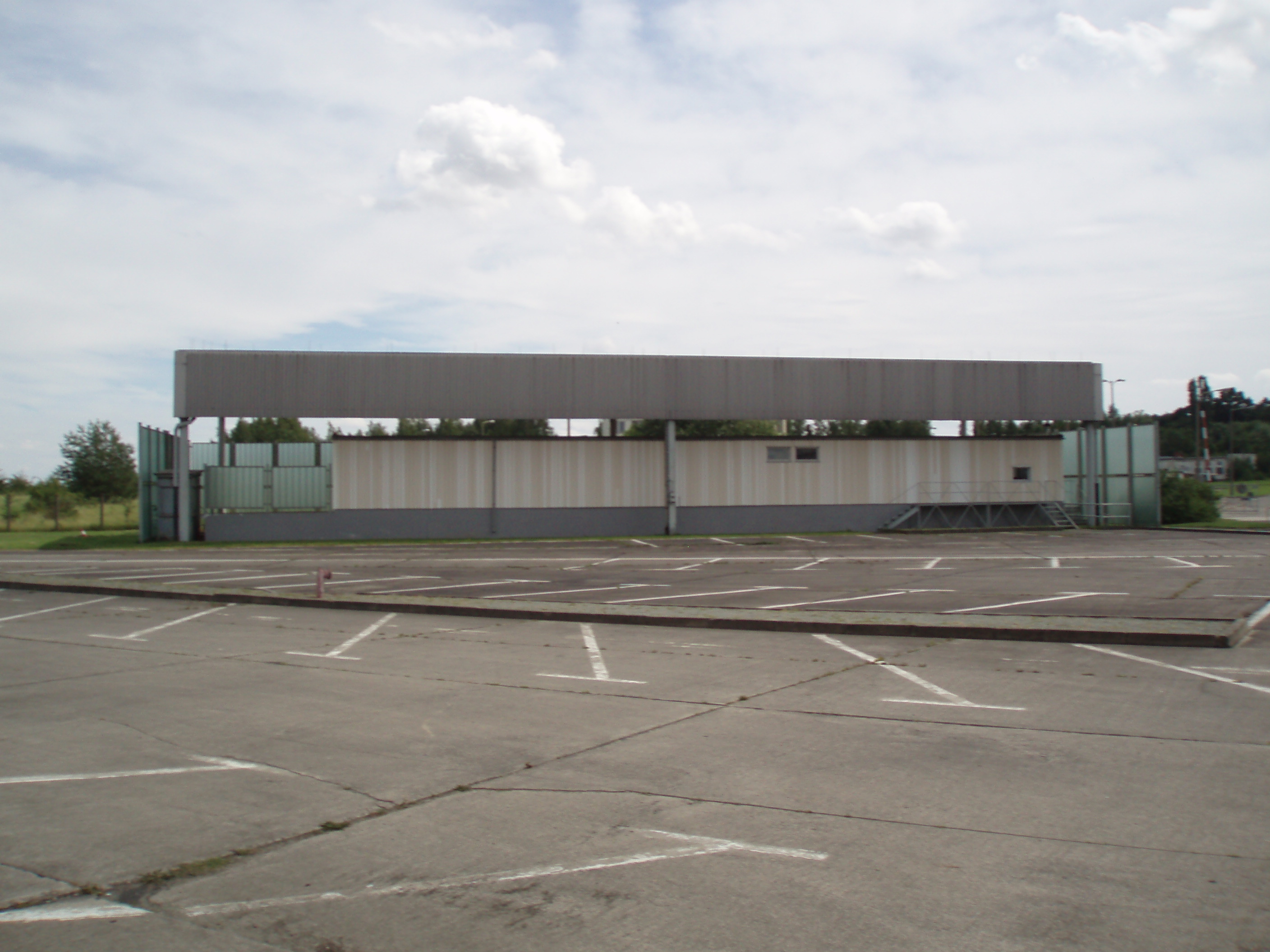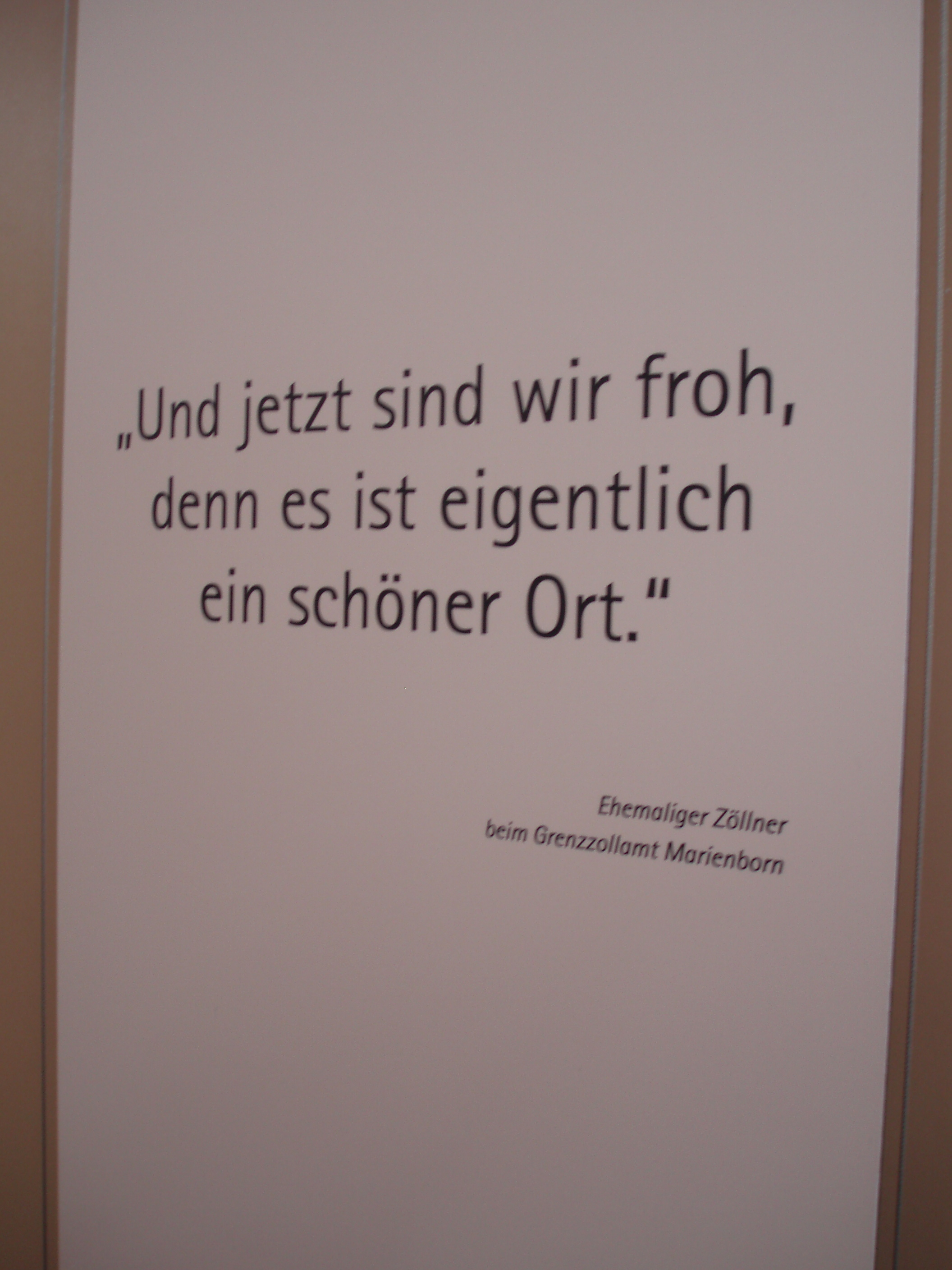Marienborn
July 28, 2007
(Saadaval ka eesti keeles.)
There’s an interesting Cold War memorial on German A2 east-west Autobahn: the Memorial of the Division of Germany in Marienborn.

Country borders and their crossings have always fascinated me. They’re the manifestations of boundaries between cultures and nations – and sometimes, as also in the case of the German border, between ideologies and civilizations. Yet the tragedy in Germany, as well as in Korea, was/is that the border was artificial, splitting the same nation and many lives and families and splitting a country that used to be one.
So to me, Marienborn is a place of great symbolic significance. It was more than a simple border crossing – alongside with the rest of inner German Border, the crossings were the physical manifestation of Cold War and Iron Curtain. I think it’s fair to say that we can compare its symbolic significance in history to that of the border between North and South Korea – but it’s much more accessible to us Europeans.
When WW2 ended, Germany was divided into four fairly equal occupation zones: American, British, French and Soviet. The three first ones merged into Federal Germany, a normal western country. The Soviet occupation zone became a separate entity and erect an elaborate system of border controls, including the Berlin wall. And inside that Eastern Germany, the city of Berlin was similarly divided into four zones, with the three western ones again becoming West Berlin, a weird entity and enclave in a hostile zone.
What’s telling about the Eastern border controls is that all the guns and persecution machinery was faced inwards, towards East German people wanting to defect, rather than “invading” Westerners (even though the Berlin wall was nominally called “anti-fascist protection barrier” by the Eastern government). This very clearly answers the question about which of the two ideologies was repressive and which was free.
Marienborn was the main road crossing point between East and West Germany, and also the shortest way to West Berlin. And so East Germany built an extensive system of border facilities here whose main aim was to catch possible defectors and smuggled goods.
Veterinary inspection area, where livestock shipments were examined.


Body search room.


Vehicle inspection area.

Portable mirror and stetoscope.


East German border troop weapons and uniform. (AK47-s look weird because there’s no clip attached that usually gives AK47 its distinctive look.)


Interrogation room.

“Open the suitcase!”


“We once had a song: Marienborn, you god-forsaken place, you are the border between East and West.”

“And now we are glad, because it’s actually a beautiful place.” – former (East German) customs official at Marienborn border customs station

“We were five colleagues, and today we know that three of us were informants.” (Informants were used by East German state and secret police Stasi to make sure that the border troops remain loyal.)

Confiscated goods.


Maintaining such museums and memorials is highly appropriate and serves a purpose of remembrance for those involved who actually worked here or used these crossings. But it also illustrates the cruelty of evil ideologies who had to set up border controls against their own people, instead of protection against external threat. And Germans being forced to do cavity searches on fellow Germans by Soviet occupiers is a sad aspect of Cold War history whose days are thankfully over in Western and Central Europe.
The memorial is easy to visit, just use the A2 autobahn and it’s right at a roadside resting place (gas station + food court). Entrance is free.
